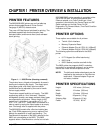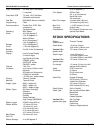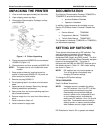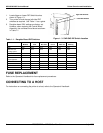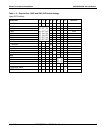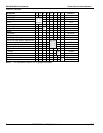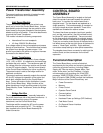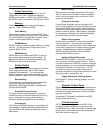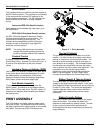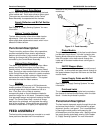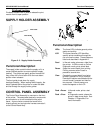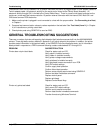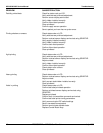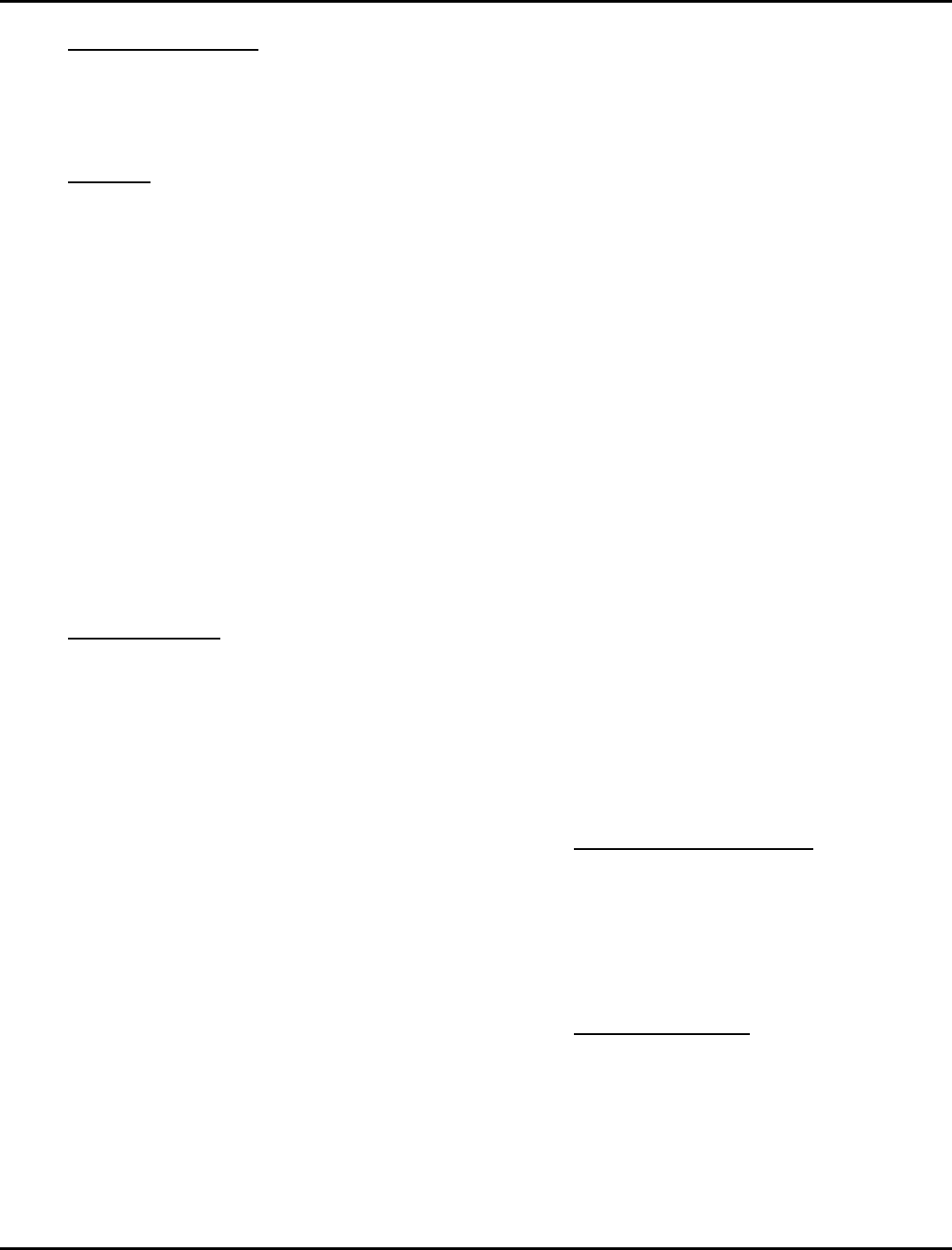
Functional Description 9820/9830/9835 Service Manual
July 1998 TC9830SM Rev. B 7/98 Confidential 9
Power Conversion
Power conversion interface receives AC and DC
voltage from the Power Transformer assembly.
35VAC is converted to +12VDC and -12VDC, while
the 40VDC input is converted to +25VDC and +5VDC.
Memory
Control Board Assebmly contains three types of
memory: Flash, DRAM and SRAM.
Flash Memory
Flash memory contains the necessary BOOT code
and Operating System functions for I/O routines used
for communications, the application program, fonts,
formats, and the Kernel/Library functions.
DRAM Memory
DRAM is used for variable storage, buffers, and image
memory. The base memory configuration for the
printer is 256K (16 bits).
SRAM Memory
SRAM (32K of non-volatile static RAM ) is used to
store system parameters and machine totals. All
relevant information is automatically stored in the
SRAM when the printer is turned off.
Printer Control
Control Board Assembly controls all printer functions.
It use a high performance, 32-bit, RISC based,
integrated microcontroller. The microcontroller
performs imaging and provides interfaces to printer
control operations. Major functions of the board are:
Data Handling
During operation, communication with both the RS-
232 port and the High Speed parallel port is
maintained. MPCL data received is transferred to
Dynamic RAM (DRAM)
Printhead Thermal Control
Printhead thermal control operation is a dynamic
closed loop servo circuit that adjusts the on/off duty
cycle in response to a continuously monitored
Printhead operating temperature and resistance.
Print Imaging
The Thermal Printhead Interface is controlled by the
microcontroller. Page image data is transferred from
Dynamic RAM to the thermal printhead as a serial
data stream.
Motion Control
Motion control sub-system controls four DC motors.
Two DC motors drive the Ribbon control, a stepper
motor controls the platen drive, and a fourth motor
drives the Peel Module.
Platen Drive Interface
Control Board Assembly controls the platen drive
motor’s torque, speed and direction through the use of
four phased 25Vdc output signals. Motor torque and
direction is controlled by changing the sequence and
pattern of the four signals. Motor speed is controlled
by increasing or decreasing the speed of the digital
pulse that make up the four phased signals.
Ribbon Drive Interface
Electronically controlled DC motors drive the ribbon
over the printhead. The motors, and associated
control software, control the tension of the ribbon web
as the ribbon spools from the supply side to the take-
up side. A speed-detection method using BEMF
(Back Electromagnetic Motor Force) provides
accurate ribbon tension control.
Analog to Digital Conversion
An ML2255 A/D converter, in conjunction with the
microcontroller, monitors system functions. The A/D
converter combines an 8-Bit A/D converter, 8-channel
analog multiplexer, and a microcontroller-compatible,
8-bit parallel interface and control logic. The A/D
converter monitors various system functions and
provides information to the printers firmware to control
the supply motion, print quality, etc.
Supply Detection & Tracking System
See Chapter 8, “Supply Sensing Systems” for more
information.
Operator Control Panel
Printer Control Board uses a Peripheral Interface Unit
(PIU) to control the operator control panel interface
comprised of a three digit display, three push-button
keys and three LEDs.
An optional 917 Keypad is available for the 9835
printer (offline batch entry).
Communications
RS-232 interface and the Centronics/IEEE 1284
compliant parallel interfaces are mounted on the
Control Board Assy. Both are located on the left edge
of the board and accessed by the user at the rear of
the printer near the supply roll.



